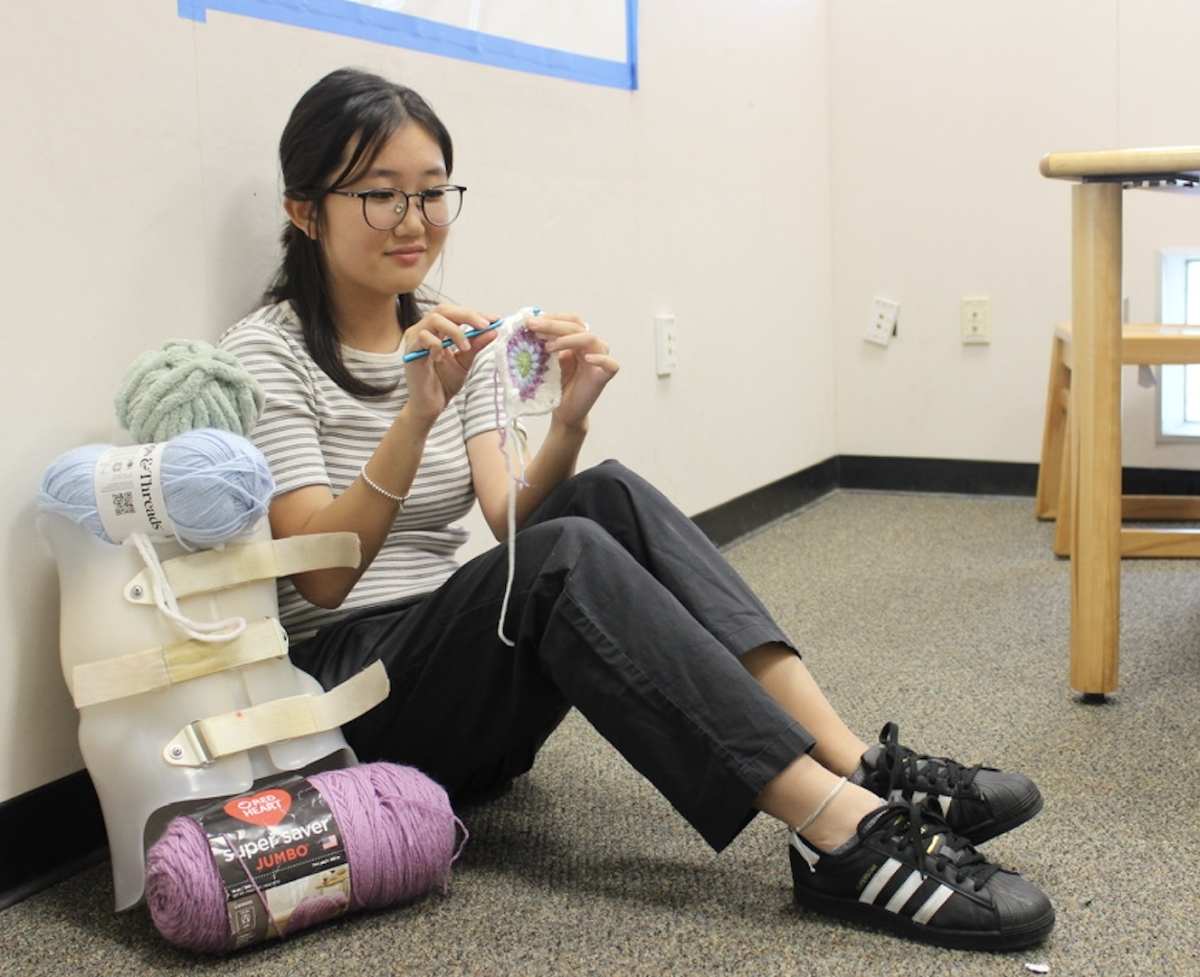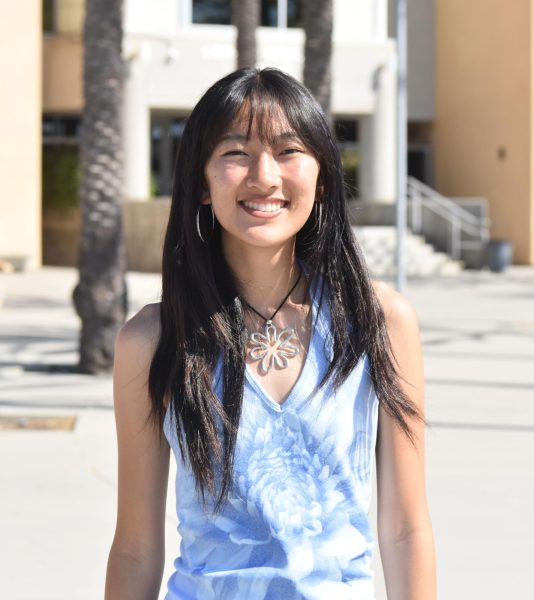Alex Tajbakhsh (12) likes to think of language-learning as a puzzle.
Not the kind where jigsaw pieces lock neatly between each other, but the kind that that allows Tajbakhsh to whittle down the jagged edges of unfamiliar words, reapply the meaning of a foreign language he’s learned from speaking, writing, and listening for the simple reward of understanding. When it comes to Mandarin, Tajbakhsh likes to visually study intersecting strokes, patterns, shapes, looking for familiarity in them.
And like any good puzzle, with enough time piecing parts of a language together, Tajbakhsh can begin to see the final image emerge.
“I have these clicks and it’s like all the dopamine releases,” he said. “When I see a [word I don’t know], at first I’m like, ‘Whoa, what on earth is that?’ One thing that sticks out to me is Chinese radicals and every time I notice it, it’s like boom. [With new words,] I can split it up into a combination of radicals. Then, I can find each radical’s meaning and piece it together. A light bulb just clicks on. That’s kind of the euphoric feeling because not only does it feel great to truly understand something beyond just memorizing it, but it also helps me learn how to write it more fluently. You can really understand it because you’re piecing together multiple meanings.”
In total, Tajbakhsh speaks five languages — Mandarin, Japanese, Spanish, Farsi, and English — the first three of which he is semi-fluent in and actively learning. But his interest in language–learning as a whole first began in his Spanish class freshman year.
“Language courses in general stuck out to me because they felt different from any other type of class,” he said. “For example, the homework we were assigned was simply to speak the language and improve our proficiency. We could ask the teacher and she would answer right away, whereas maybe in a math or science class, there might be some barrier between having the confidence or courage to ask questions. But for language classes, it felt really warm. Everybody was together in learning this language and I felt I had the courage to continue taking it.”
In his sophomore year, Tajbakhsh continued with Spanish courses, but was also inspired to start learning Japanese because of his friend who spoke the language. However, as he invested himself further, his interest extended beyond simply the language.
“It began on Duolingo and I had no intentions of really taking it far,” he said. “Day by day, I learned more and more vocabulary and from there, I became interested in Japanese architecture. I was really impressed with something called Sashimono architecture where they interlock pieces. I was interested in engineering and architecture, and the Japanese style really intrigued me as well, so I had more of a passion to continue studying this language.”
Without having a formal architecture class to guide his exploration, Tajbakhsh said he watched documentaries and did his own research, eventually leading him through a Japanese down a Chinese architecture rabbit hole, influencing him to learn Mandarin.
“I found out this style of Japanese architecture was derived from Chinese architecture,” he said. “The Chinese have this [construction method] known as Dougong, and they built all the temples [this way] like the Forbidden City, which I’m a really big fan of. Instantly, I was really, really interested. Beyond that, I started researching more and over the past year now I’ve been really interested in Chinese philosophy like Taoist and Buddhist philosophy. These factors inspired me to learn the Chinese language.”
Tajbakhsh is now taking Chinese 3-4, which involves learning not just the language, but also the culture, which he considers to be the most important part.
“[Learning the culture] is the biggest motivator to go study the language,” he said. “It’s also one of the reasons why I’m not into [Farsi] at the moment because, although I am Persian, I don’t feel many things really spark me to study it, whereas with Japanese and Chinese, I’m interested in studying the philosophy and architecture. Being able to connect that to the language I’m studying [offers me] a hidden way to want to study language even more. It connects [to my typical interests] and suddenly, without even realizing it, I’m studying the foreign language while just enjoying what I want to do with my hobbies.”
From language to language, grammatical rules vary in complexity, an aspect of language learning that Tajbakhsh said excites him.
“When I started to learn Spanish in my freshman year and was trying to get accustomed to those grammatical structures, it started clicking to me because [it’s similar to] English,” he said. “But then, Japanese took on a whole different [form] because verbs are at the end of the sentence, everything is flipped around. It became a puzzle trying to structure these sentences and that was really intriguing to me. Then, Chinese continued to build off of that. It really broadened my horizon. It feels like each new language I try, it’s a new set of understanding that you apply and that’s really fun to me.”
His approach to learning languages is applicable to every challenge he faces.
“People say Chinese is the hardest language, but for me it feels easy,” he said. “I think it’s because people get intimidated and end up trying to memorize characters, which isn’t a good idea because there are so many. If you look at each character and split it up, it allows you to gain an understanding beyond just seeing the character at first appearance. You could think about it generally. You might be faced with a challenge, and it can seem intimidating, but splitting up this action into tiny things [can make it] really plausible. Over the course of doing those actions, [you can] achieve something you probably would have never guessed you could do.”
In developing his own understanding of his passions, other cultures, and their intersections through language–learning, Tajbakhsh said the most valuable part is being able to make connections wherever he goes.
“I found out [administrative specialist Ritsuko Huth] is also Japanese, so I’m always asking her questions,” he said. “I just like speaking with new people and meeting new people. Learning language almost bridges that barrier from being afraid to talk to somebody new because it’s something that you share in common. The best part about learning languages is meeting new people and speaking with them, because not only can we improve our proficiency in the foreign language, but we can also gain another friend.”





